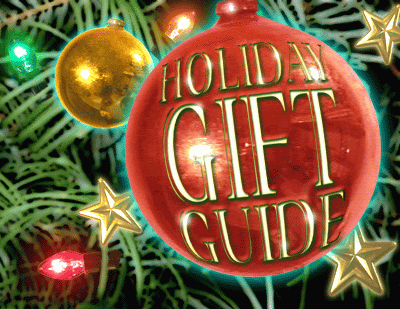On occasion, I love to read a beefy business book. Tom Peters. Seth Godin. They’re the guys who seem to have their fingers on the pulse of what works -- and more, why it works. Every time I read one of their books, I find nuggets of gold.

So imagine my curiosity when I spotted a book called
1,000 Dollars and an Idea (Newmarket) by a guy called Sam Wyly. It reached out to me, I think, because it didn’t look like a Peters book or a Godin book or any number of those slickly designed business memoirs by any number of quasi-famous people who might appear in
Vanity Fair’s annual establishment issue. It looked... real. And you know what? It is.
1,000 Dollars and an Idea doesn’t reads less like a business memoir and more like a thriller. I mean, there’s never any doubt that 007 kills the villain, destroys the lair, beds the girl. And here, there’s no doubt that Wyly becomes a billionaire; it says so, right on the cover. So the big question is: how does it happen? What’s the path? What’s the story?
For Sam Wyly, the story began in a tiny Louisiana town, from being dirt poor to becoming one of the nation’s most visionary businessmen. Back when everyone was looking at computer hardware, Wyly was looking at software. Back when everyone was shying away from doing business with AT&T and its monopoly, Wyly took them on and was instrumental in the company’s break-up. Along the way he also rescued the Bonanza restaurant chain and grew Michaels craft stores into one of the nation’s megabrands. Today, he’s involved in wind energy. Will he change our lives again? Bet on it.
As thriller-like as it is,
1,000 Dollars and an Idea is, at heart, a nostalgic look back at a man’s life. Wyly has an intense respect for his past, his own history. In these pages, his childhood home comes to life. He describes early business meetings and infuses them first with real suspense, then the exhilaration of success. It’s almost childlike, wide-eyed -- and suddenly this billionaire seems like a real guy. Not a god of business, but a guy with good ideas who found himself more successful than he ever dreamed he would or could be. But he knows it could have gone the other way.
“That’s been the experience,” Wyly told me in a recent interview. “You sort of learn by doing. Some things work, some things don’t work. We learn by failing as well as by succeeding at things.”
One of the most arresting details of Wyly’s life has nothing to do with business. In Dallas on the morning of November 22, 1963, he saw the president’s motorcade. “I had just watched the president and

Jackie go by, watching from the third floor of the Neiman Marcus building, and by the time I got in my car in the parking garage, it was coming on the radio that he’d been shot. I just couldn’t get over it, it was just disbelief and denial that it couldn’t have happened. And gradually I realized, yeah, it happened, and it’s just... I spent several days just glued to the TV.”
And two days later, he saw Ruby shoot Oswald -- then recognized Ruby as an old neighbor of his. “That was a double stunner.”
This kind of thing happens throughout
1,000 Dollars and an Idea. Though Wyly is always in the middle of something exciting, his focus isn’t on himself as much as it is on the people who helped him and contributed so much to his success and his life.
“I’ve been lucky to have had some really able people come into my life at points along the way,” he told me. “Different people with different skills and different knowledge that contributed to what we’re doing together.”
There’s something about writing a memoir about your own life, then giving so much of the credit away to other people. You don’t see that lot. It impressed me.
Early on, Sam Wyly was in the oil business. Now he’s in the clean energy business -- and there have been a lot of ventures (and adventures) in between. I wondered if there’s one thing that stands out, a legacy.
“I don’t know if I could just pick one thing. I’m a guy who likes a chocolate milkshake one month,” he told me, “and a strawberry milkshake the next.”
We talked a little about
John Adams, the HBO miniseries, and the nation’s founding fathers. I mentioned the episodes about writing the Declaration of Independence and said that these were simply men of their times, businessmen and farmers with a vision for something new, even revolutionary.
“That’s what I’ve seen myself doing,” Wyly said after a moment. “To look at something as it is and think about how could it be. And then to set about to make it happen.”
1,000 Dollars and an Idea isn’t hard-edged or prescriptive like Tom Peters’ and Seth Godin’s books. Instead, it’s got a gentle style that feels like you and Wyly are sitting in his living room, and he’s telling you stories... whispering, so you lean in. And when he’s done and you’re driving back home, you suddenly get the one real message, the powerful suggestion that in business and in life, if you have courage, if you stoke your own determination, and if you surround yourself with talented people you, too, can make it happen.
Labels: interview, non-fiction, Tony Buchsbaum

 last one year, then he traveled to a remote island in the Patagonian wilderness with the idea of exploring the effects that deep solitude might have on body and mind.
last one year, then he traveled to a remote island in the Patagonian wilderness with the idea of exploring the effects that deep solitude might have on body and mind.















































